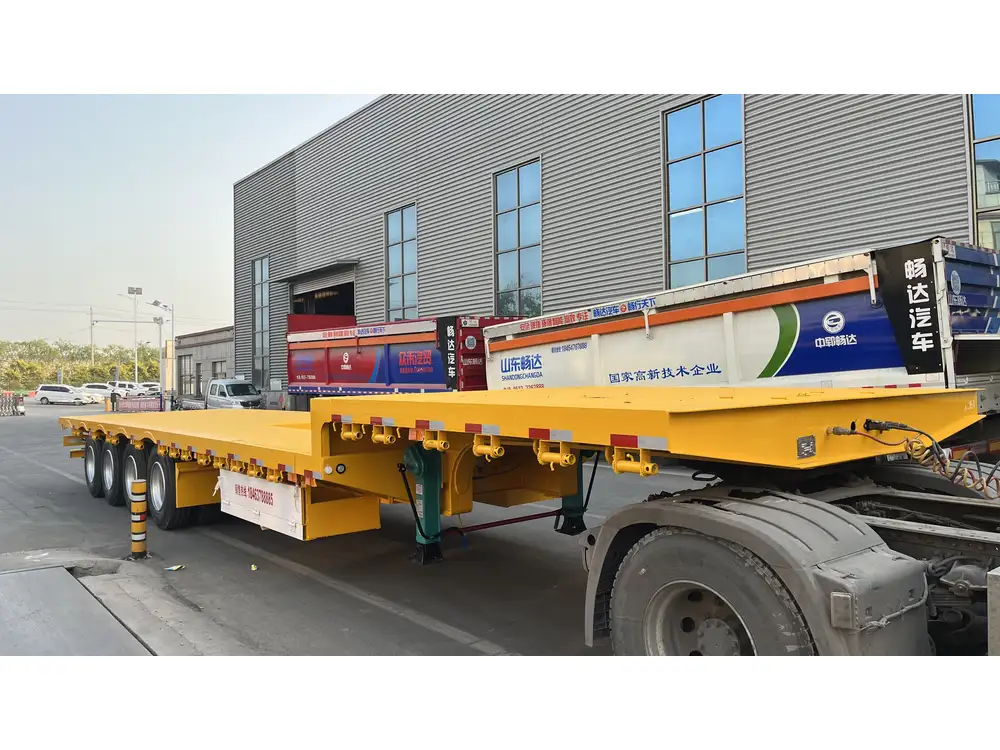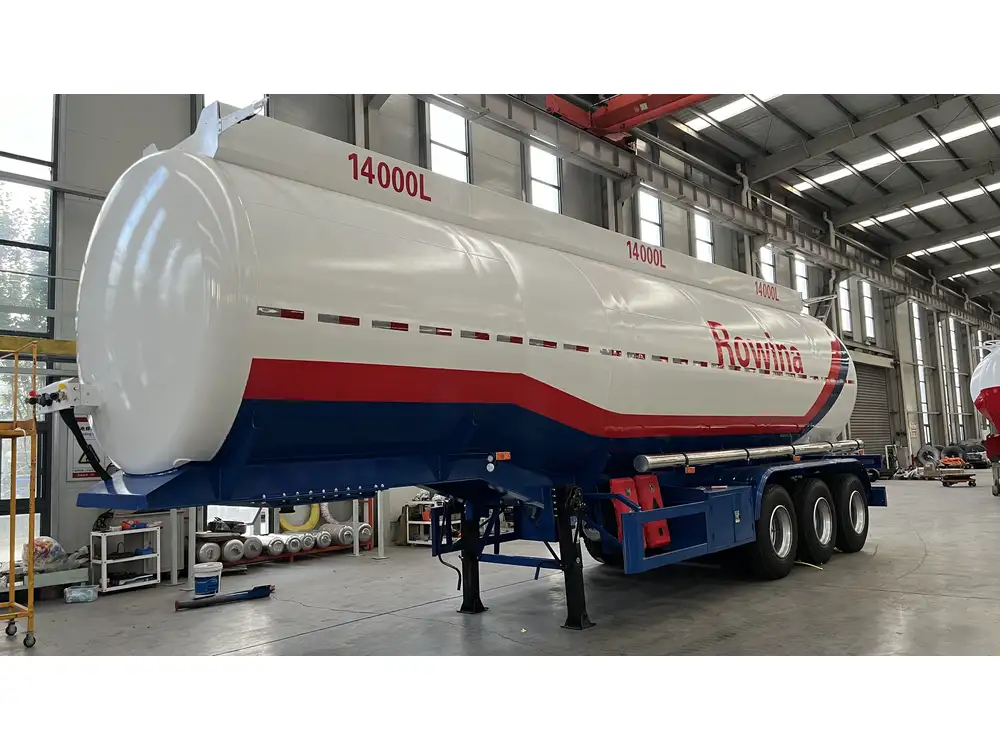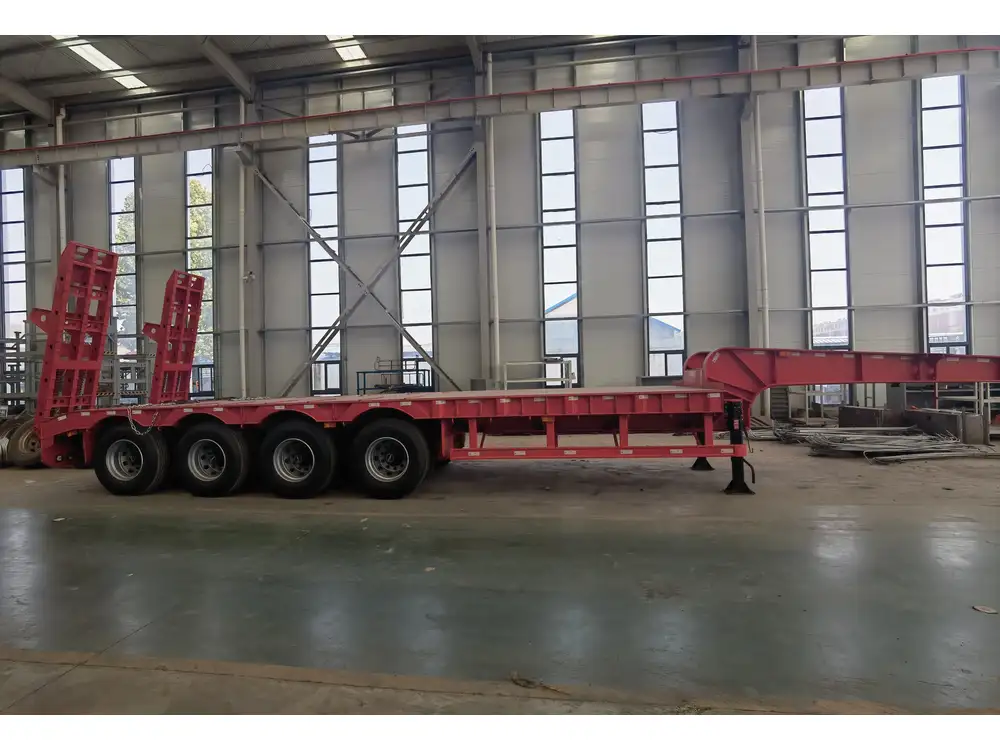Tractor trailer tankers, quintessential giants of the transportation industry, play a pivotal role in the distribution of liquid goods across vast distances. A critical aspect of their operation is the fuel capacity, which not only determines their range but also directly impacts efficiency and operational costs. This detailed examination demystifies the fuel containment capabilities of tractor trailer tankers, providing essential insights for fleet operators, logistics managers, and industry enthusiasts.
Fuel Tank Specifications: A Closer Look
The fuel capacity of a tractor trailer tanker can significantly vary based on its design and intended use. The major influencers of a tanker’s capacity include:
| Tanker Type | Typical Capacity (Gallons) | Typical Capacity (Liters) |
|---|---|---|
| Standard Tanker | 5,000 – 11,600 | 18,900 – 43,900 |
| LPG Tanker | 2,000 – 4,000 | 7,600 – 15,100 |
| Milk Tanker | 5,000 – 8,000 | 18,900 – 30,300 |
| Chemical Tanker | 5,000 – 12,000 | 18,900 – 45,400 |
| Fuel Tanker | 7,000 – 11,600 | 26,500 – 43,900 |
In this table, the diversity in capacities illustrates the specialization of tankers designed for various types of liquids, plays a crucial role in selecting the right vehicle for specific tasks.
Standard Tanker Capacity
Standard tractor trailers, often utilized for general freight transport, typically hold between 5,000 and 11,600 gallons. These capacities facilitate efficient bulk transportation of liquids like water, chemicals, or food products. However, the choice of tanker also hinges on regulatory limitations, road conditions, and payload requirements.

Specialized Tankers: Unique Capacities
LPG Tankers: Liquefied Petroleum Gas (LPG) tankers are engineered with robust designs that generally accommodate between 2,000 and 4,000 gallons. The capacity must comply with stringent safety regulations to prevent hazardous material issues during transport.
Milk Tankers: Designed with sanitation and sterility in mind, milk tankers usually hold about 5,000 to 8,000 gallons of liquid dairy. The build materials ensure that the quality of the milk is preserved throughout the transportation process.
Chemical Tankers: For transporting hazardous materials or chemicals, capacities can range from 5,000 to 12,000 gallons, contingent upon the chemical’s nature and accompanying regulations.
Fuel Tankers: These tankers are vital for the oil and gas industry, often holding 7,000 to 11,600 gallons. Their design includes multiple compartments to handle various grades of fuel safely.
Factors Influencing Fuel Capacity
When examining the fuel storage capabilities of tractor trailer tankers, several factors emerge that influence both the efficiency and operational license of these vehicles:
Design Layout: The structural design plays a critical role in the volume of liquid that a tanker can securely hold. Split tanks and compartmental designs allow for a better distribution of weight and more safe transport practices.
Regulatory Compliance: Each state or country has regulations governing the maximum capacity for transport based on road and safety standards. It is essential for fleet operators to understand these limitations to avoid fines and improve route planning.
Weight Restrictions: While a tanker may be capable of holding a large volume, operational weight limits imposed by local laws may necessitate limiting the load. Awareness of axle weight distribution ensures compliance and vehicle longevity.
Material of Construction: The type of materials used in manufacturing these tankers also determines the overall capacity. Stronger materials allow for lighter constructions that can hold greater volumes without exceeding weight limits.
Purpose of the Tanker: Tankers are often customized for specific liquid types, affecting their design and consequently their fuel capacity. For instance, food-grade tanks may have additional insulation which may slightly reduce effective holding capacity.
Efficiency and Operational Costs
Understanding the actual fuel capacity of tractor trailer tankers not only affects operational efficiency but can also influence the bottom line of a logistics operation. Several key aspects come into play, including:

Fuel Economy
There is an undeniable correlation between fuel capacity and fuel economy. Larger fuel tanks enable longer hauls without stopping for refueling, which can significantly reduce operational delays and make for a streamlined scheduling system.
Load Management
Effective fuel capacity management can optimize load management, allowing operators to strategically plan routes and manage delivery schedules without running into unexpected fuel shortages. Implementing tracking systems can assist in analyzing fuel consumption, thus aiding clerical decisions.
Cost-Benefit Analysis
Calculating the total operating cost per mile, inclusive of fuel, maintenance, and potential downtime is crucial for evaluating fleet efficiency. Comprehensive analysis reveals ways to optimize routes and manage fuel consumption ratios to bridge gaps in expenditure.
| Cost Factor | Average Cost per Mile | Comments |
|---|---|---|
| Fuel Costs | $1.50 – $2.00 | Prices fluctuate based on market volatility. |
| Maintenance | $0.10 – $0.20 | Regular checks and services are vital. |
| Driver Wages | $0.30 – $0.50 | Impacts overall operational economy. |
This table summarizes approximate costs associated with running a tractor trailer, helping operators gauge the operational costs effectively.

Optimizing Fleet Performance with Technological Innovations
Technology continues to revolutionize the trucking industry, providing tools that enhance the management of fuel capacity. Some notable innovations include:
Telematics Systems: These offer real-time data regarding fuel levels, consumption rates, and overall fleet performance indicators, allowing for proactive management.
Fuel Management Software: Specialized software solutions assist in planning and forecasting fuel purchases based on historical consumption and route optimization.
GPS Routing: Advanced GPS technology aids in reducing fuel consumption by optimizing route planning, minimizing idle time, and ensuring that trucks operate within the optimal speed range.
Future Trends in Tanker Designs
As the industry evolves, so do the designs and capacities of tractor trailer tankers. Considering future trends can provide insight into potential shifts in fuel capacities:
Eco-Friendly Materials: There is a growing trend toward developing tankers with sustainable materials which may reshape the design considerations and weight capacities.
Advanced Compartmentalization: Multi-compartment tankers will likely become more prominent, providing operators with flexibility for transporting different products in one shipment.
Integration of Alternative Fuels: As the industry moves towards sustainability, tankers designed for alternative fuels (like electric vehicles or hydrogen) could redefine what we consider “capacity” in the future.
Conclusion: Planning for the Future
The understanding of how much fuel a tractor trailer tanker can hold goes beyond simplistic calculations—it involves a nuanced grasp of various operational, regulatory, and technological factors that all impact the transport of goods. As fleet operators navigate the complexities of the logistics landscape while remaining compliant with stringent regulations, staying current with industry innovations will be essential for enhancing efficiency and ensuring cost-effectiveness.
The capacity of tankers remains a critical consideration in planning logistics strategies, optimizing routes, and enhancing overall fleet performance. By harnessing the right tools and understanding the underlying principles of fuel capacities, operators can ensure that their tanker fleets operate at peak efficiency, ready to meet the demands of a dynamic market.



